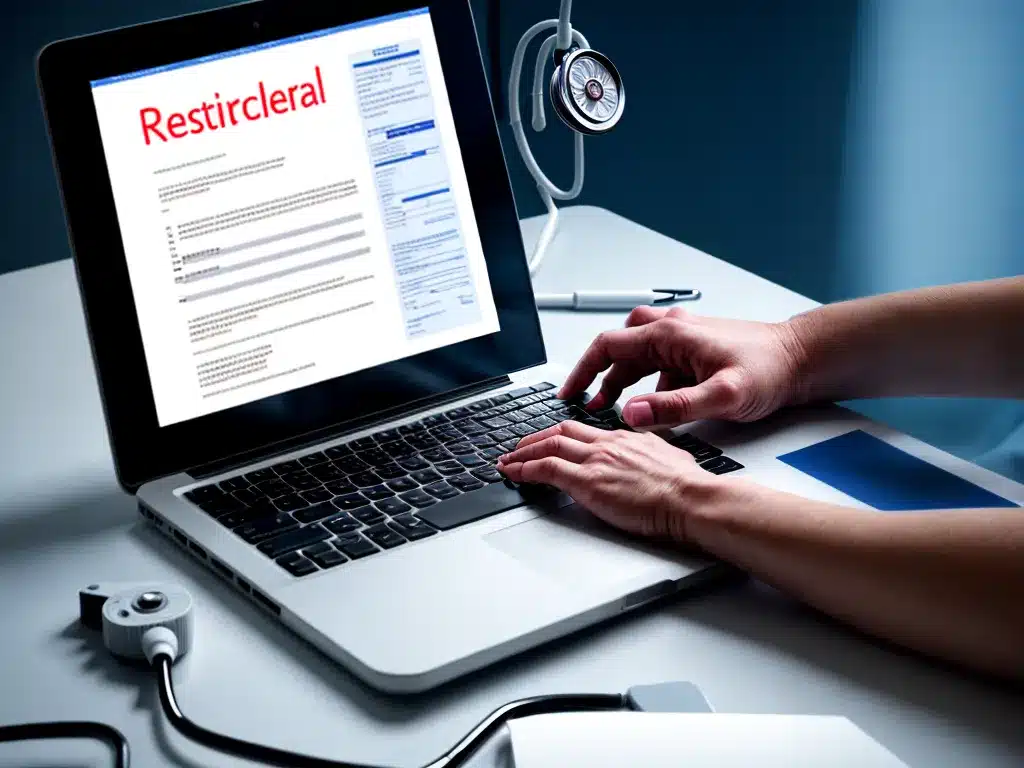
As a medical professional in this digital age, I am acutely aware of the importance of protecting patient privacy and medical record security. Recent years have seen an explosion in the use of electronic medical records (EMRs), bringing convenience but also new risks. As technology continues to advance, maintaining confidentiality is an evolving challenge requiring diligence and savvy on my part.
The Rise of EMRs – Convenience With Risks
The transition from paper to digital medical records has brought tremendous benefits. EMRs give providers instant access to patient histories, reduce duplication of tests, facilitate care coordination, and more. However, increased connectivity also creates new vulnerabilities.
- EMR systems can be hacked, infiltrated by malware, or subject to unauthorized access by insiders.
- Patients’ most sensitive health details are accumulated in one place, ripe for abuse.
- Digital records can be copied easily and distributed rapidly.
Maintaining the integrity and confidentiality of EMRs is essential to preserving patient trust and privacy. As a medical professional, this responsibility falls heavily on me.
My Role In Safeguarding EMRs
As a caregiver interacting daily with EMR systems, I am on the frontlines of medical record security. Simple habits and protocols on my part can go a long way towards prevention.
Access Controls
- I ensure I log off EMR systems when workstations are unattended.
- I never share login credentials or passwords with others.
- I change passwords regularly per protocol.
Handling Records
- I refrain from printing hard copies of records except when absolutely necessary.
- I properly dispose of printed records through official shredding bins.
- I abstain from removing or emailing records outside the official system.
Communicating Caution
- I am careful when discussing patient cases in public areas where conversations can be overheard.
- I remind friends and family not to repeat sensitive details I may share about my work day.
- I emphasize confidentiality when students or trainees observe my practice.
By meticulously following security protocols and exercising caution, I strive to uphold patient privacy as records become increasingly digitized.
Security Starts At The Top
While individuals like myself play a key role, institutional policies and technologies are equally important for EMR security.
Leadership
- Administrators must foster a culture of vigilance regarding records.
- Regular training ensures all staff understand security responsibilities.
- Protocols should outline appropriate access controls and handling procedures.
System Safeguards
- Encryption protects records if systems are hacked.
- Access monitoring tracks breaches and unauthorized viewing.
- Network security features like firewalls should be robust.
Response Planning
- Procedures should be in place to contain and mitigate breaches if they occur.
- Policies must clearly define consequences for improper access or sharing of records.
A multilayered approach spanning people, processes, and technology offers the best chance of success.
Looking Ahead: The Balancing Act
Advances like cloud computing and AI analytics have enormous potential to improve care but also raise new concerns. As innovation marches forward, we must be thoughtful. Protecting patients requires finding the right equilibrium between technological benefits and privacy risks.
If challenges are met with sustained commitment from all involved – individuals, institutions, regulators and technology partners – I am optimistic medical confidentiality will withstand the digital transformation underway. With diligence and care from medical professionals like myself on the frontlines, I know we can safeguard patient wellbeing in this new era.












